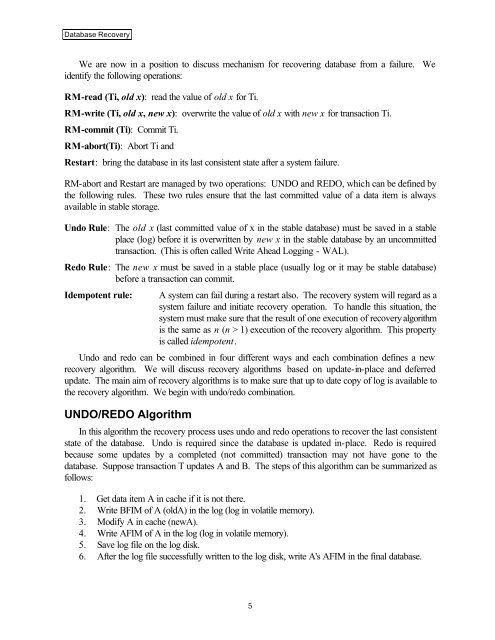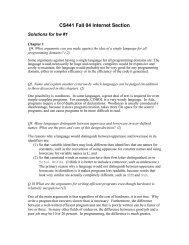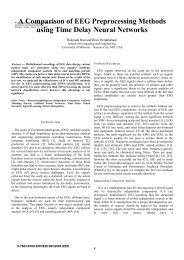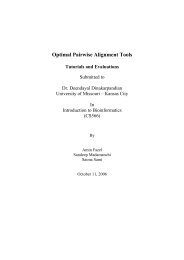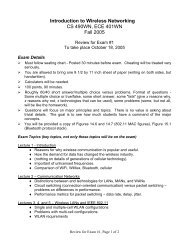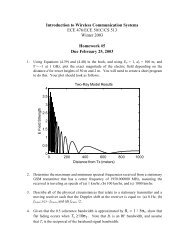CS470 Introduction to Database Systems Database Recovery
CS470 Introduction to Database Systems Database Recovery
CS470 Introduction to Database Systems Database Recovery
Create successful ePaper yourself
Turn your PDF publications into a flip-book with our unique Google optimized e-Paper software.
<strong>Database</strong> <strong>Recovery</strong><br />
We are now in a position <strong>to</strong> discuss mechanism for recovering database from a failure. We<br />
identify the following operations:<br />
RM-read (Ti, old x): read the value of old x for Ti.<br />
RM-write (Ti, old x, new x): overwrite the value of old x with new x for transaction Ti.<br />
RM-commit (Ti): Commit Ti.<br />
RM-abort(Ti): Abort Ti and<br />
Restart: bring the database in its last consistent state after a system failure.<br />
RM-abort and Restart are managed by two operations: UNDO and REDO, which can be defined by<br />
the following rules. These two rules ensure that the last committed value of a data item is always<br />
available in stable s<strong>to</strong>rage.<br />
Undo Rule: The old x (last committed value of x in the stable database) must be saved in a stable<br />
place (log) before it is overwritten by new x in the stable database by an uncommitted<br />
transaction. (This is often called Write Ahead Logging - WAL).<br />
Redo Rule: The new x must be saved in a stable place (usually log or it may be stable database)<br />
before a transaction can commit.<br />
Idempotent rule:<br />
A system can fail during a restart also. The recovery system will regard as a<br />
system failure and initiate recovery operation. To handle this situation, the<br />
system must make sure that the result of one execution of recovery algorithm<br />
is the same as n (n > 1) execution of the recovery algorithm. This property<br />
is called idempotent.<br />
Undo and redo can be combined in four different ways and each combination defines a new<br />
recovery algorithm. We will discuss recovery algorithms based on update-in-place and deferred<br />
update. The main aim of recovery algorithms is <strong>to</strong> make sure that up <strong>to</strong> date copy of log is available <strong>to</strong><br />
the recovery algorithm. We begin with undo/redo combination.<br />
UNDO/REDO Algorithm<br />
In this algorithm the recovery process uses undo and redo operations <strong>to</strong> recover the last consistent<br />
state of the database. Undo is required since the database is updated in-place. Redo is required<br />
because some updates by a completed (not committed) transaction may not have gone <strong>to</strong> the<br />
database. Suppose transaction T updates A and B. The steps of this algorithm can be summarized as<br />
follows:<br />
1. Get data item A in cache if it is not there.<br />
2. Write BFIM of A (oldA) in the log (log in volatile memory).<br />
3. Modify A in cache (newA).<br />
4. Write AFIM of A in the log (log in volatile memory).<br />
5. Save log file on the log disk.<br />
6. After the log file successfully written <strong>to</strong> the log disk, write A's AFIM in the final database.<br />
5


